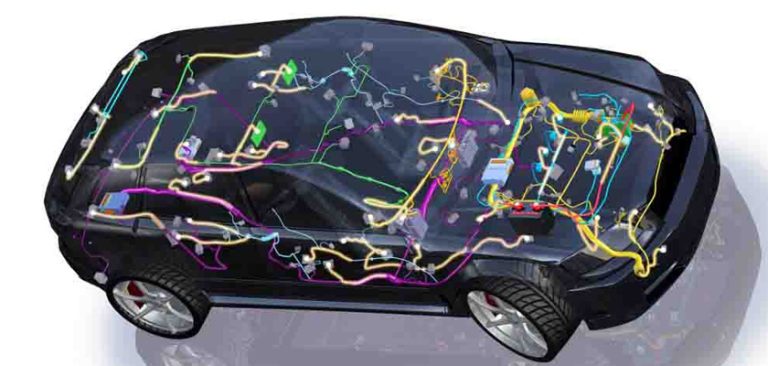If you’re a car owner, you know how important it is to keep your vehicle in good working condition. One of the most critical components of a car is the wiring. Without properly functioning wiring, your car’s electrical systems won’t work properly, which can be a frustrating and even dangerous problem. However, understanding car wiring and how to repair it can save you time and money, and even improve your car’s performance.
Understanding Car Wiring
Car wiring is a complex system of wires and connectors that run throughout the vehicle, connecting all the different electrical systems together. These systems include the battery, alternator, starter, lights, radio, and more. The wiring in modern cars is usually hidden behind the dashboard and other panels, making it challenging to access. However, with a little bit of know-how and the right tools, you can diagnose and repair wiring problems on your own.
Tools and Materials
To work on car wiring, you’ll need some basic tools and materials. Here’s a list to get you started:
- Multimeter: This is a tool that measures voltage, current, and resistance in electrical circuits. It’s essential for diagnosing wiring problems.
- Wire strippers: These are used to remove the insulation from the wires so you can make connections.
- Electrical tape: This is used to insulate and protect connections.
- Soldering iron: If you need to make more permanent connections, you’ll need a soldering iron and some solder.
- Wire connectors: These are used to connect two or more wires together.
Diagnosing Wiring Problems
Diagnosing a wiring problem can be challenging, as there are many things that can go wrong with car wiring. However, there are some common symptoms of wiring problems, such as fuses blowing frequently, lights not working or flickering, electrical devices not working at all, or burning smells or smoke coming from the dashboard or engine compartment. If you notice any of these symptoms, the first thing you should do is check the fuses. If a fuse is blown, that’s usually a sign that there’s a wiring problem somewhere in the circuit. If the fuses are all okay, you’ll need to use a multimeter to test the wiring for continuity and voltage.
Repairing Wiring Problems
Once you’ve identified the problem, it’s time to start repairing the wiring. Here are some basic steps to follow:
- Disconnect the battery: Before you start working on any electrical system in your car, you should always disconnect the battery to prevent any accidental shorts.
- Locate the problem: Using your multimeter and other diagnostic tools, locate the section of wiring that’s causing the problem.
- Strip the wires: If you need to make a new connection or replace a section of wire, you’ll need to strip the insulation from the wires using your wire strippers.
- Make the connection: Depending on the type of connection you need to make, you can either use wire connectors or solder the wires together. Be sure to insulate and protect the connection with electrical tape.
- Test the circuit: Once you’ve made the repair, reconnect the battery and test the circuit to make sure everything is working properly.
Conclusion
In conclusion, understanding car wiring and how to repair it is an essential skill for any car owner. Not only can it save you money by allowing you to diagnose and repair problems yourself, but it can also improve your car’s performance and safety. Remember to prioritize safety by always disconnecting the battery before working on any electrical systems, and don’t hesitate to consult a professional mechanic if you’re unsure about what you’re doing. With a little patience and perseverance, you’ll be able to keep your car’s wiring in top shape for years to come.
As a car owner, you’re likely passionate about your vehicle and want to keep it running smoothly for years to come. While maintaining your car’s exterior and mechanical components is crucial, it’s also essential to pay attention to the complex system of wires and connectors that make up your car’s electrical system.
Car wiring may seem like a daunting subject, but with the right tools and knowledge, you can diagnose and repair wiring problems on your own. By doing so, you can save money on costly repairs and improve your car’s performance and safety.
To get started, you’ll need some basic tools and materials, including a multimeter to diagnose wiring problems, wire strippers to remove insulation, electrical tape to insulate and protect connections, a soldering iron and solder for more permanent connections, and wire connectors to join wires together.
Diagnosing a wiring problem can be tricky, but common symptoms include blown fuses, flickering lights, malfunctioning electrical devices, and burning smells or smoke. Using a multimeter and other diagnostic tools, you can locate the section of wiring that’s causing the issue.
Once you’ve identified the problem, it’s time to get to work. Start by disconnecting the battery to prevent any accidental shorts. Then, strip the insulation from the wires using your wire strippers and make the connection using wire connectors or soldering, being sure to insulate and protect the connection with electrical tape.
Finally, test the circuit to ensure everything is working correctly. By following these steps, you can keep your car’s wiring in top shape, ensuring that it runs smoothly and safely for many years to come.
Remember, safety always comes first when working on your car’s electrical system. Always disconnect the battery before working on any electrical systems, and don’t hesitate to consult a professional mechanic if you’re unsure about what you’re doing.
So, take pride in your car and keep its electrical system in top shape. With patience and perseverance, you can maintain your vehicle’s performance, safety, and overall beauty for many miles down the road.










